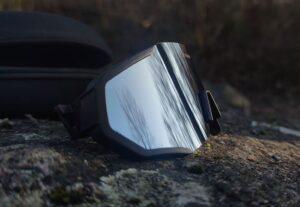If you’re not interested in shopping at the grocery store every day or week, or you spend a lot of time in the wilderness hunting and fishing, or even growing your own food, then understanding food storage and preservation best practices can help you keep your food lasting longer.
You may even be one of the many people that are concerned about food shortages and supply chain disruptions that are trying to stock up on food but finding that you’re buying more than you can use before the food goes bad.
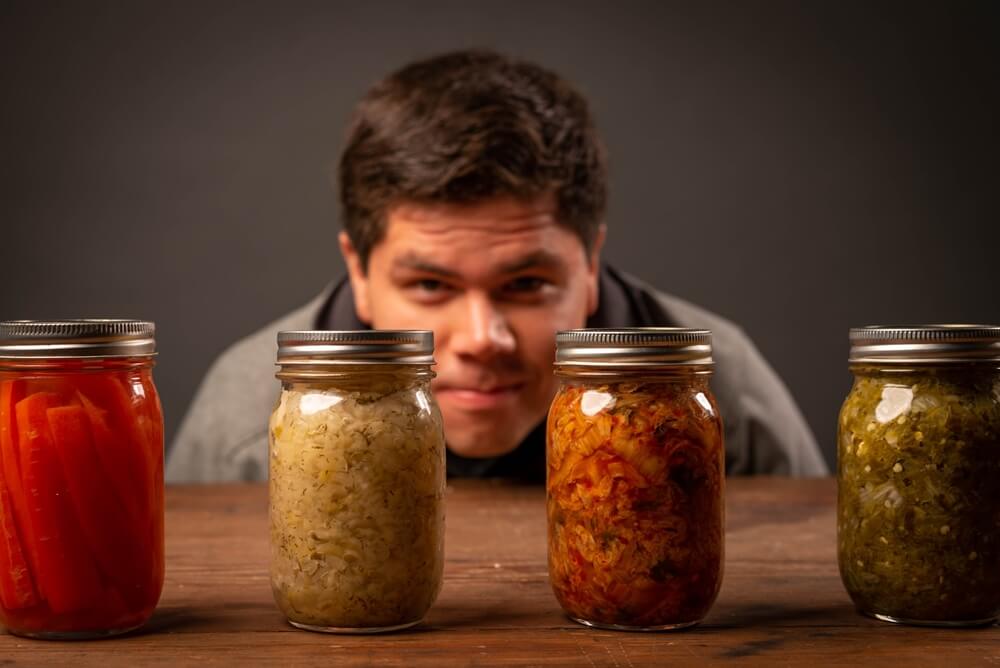
Whatever method you use to get your food, you can make it last longer, and in some cases, you can make it last for months without any detriment to the taste or nutritional value of the food if it’s stored and preserved properly.
Food Storage Basics
Even without preserving your food, there are some basic best practices to follow that will make your food last longer in the fridge, freezer, or just sitting in the pantry.
These food storage best practices can also help you keep your preserved food lasting longer once you move onto that skill set.
Ideal Home Temperature For Food Storage
A helpful tip for overall food preservation and getting your food stored away is that kitchen or transport of your food should be done as cool as possible.
However, temperatures over 90 degrees Fahrenheit can half the time your perishable food will last before you store it, so keep your kitchen and house cooler and lower the temperature in your car as you’re transporting the food.
Ideal Home Humidity For Food Storage
Another helpful tip is that humidity in your home can impact food in cupboards, pantries, or left out on the counter, so ensure that the humidity in your home is between 30% – 50%; if you go higher, it can lead to food spoiling faster and having mold grow on food.
Food Storage In The Fridge
Your fridge is the ideal place to store food items that are semi-perishable but that you want to use in the near future, so preservation options or freezing isn’t ideal.
The ideal temperature for your fridge is 40 degrees Fahrenheit or lower; anything higher and food will spoil a lot faster and often quicker than the use-by dates on any food labeling.
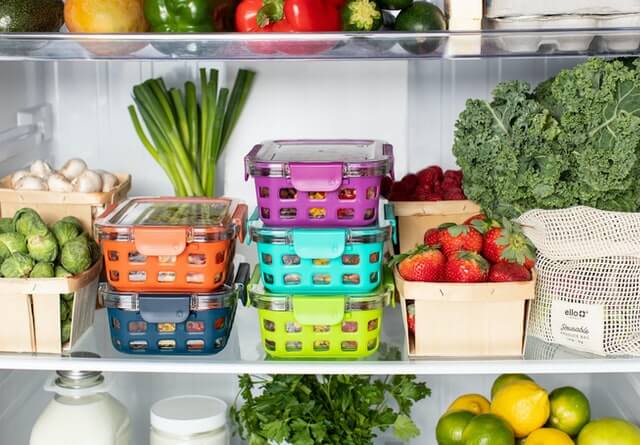
Something to consider is how often you’re going into the fridge and leaving the door open, which is a common issue or practice when kids are in the home. You may need to set the fridge temperature lower to handle the increased time the door is open and heating up.
- Put perishable food away as quickly as possible.
- Put food in the proper location of your fridge, as different areas work better for different food.
- Condiments and less perishable items should be stored in the door.
- Eggs and other packaged food should be stored on higher shelves
- Fresh produce should be stored in your crisper tray
- Meat should be stored on the bottom shelf or drawer.
- Once you open any packages stored in the fridge, transport those food items into a resealable ziplock bag or airtight container instead of the original container.
Food Storage In The Freezer
Your freezer is one of the easiest ways to preserve your food, whether you’re buying it from the store or hunting and gathering items yourself from the wild. You can extend the life of meats, vegetables, bread, and almost anything by properly packing and storing it in the freezer.
The ideal temperature to keep your freezer is 0 degrees Fahrenheit, keep an eye on the temperature through the digital thermometer on the freezer or consider buying a cheap shelf thermometer so you can easily see the true temperature in your fridge.
- Don’t overfill your freezer, as reduced airflow can cause temperature fluctuations or issues in different areas of the freezer.
- Store all foods in zip lock bags or plastic containers to avoid freezer burn and spoiled of your frozen food.
- Label your foods with what they are and the date they were packed away.
Food Storage In The Pantry
Some non-perishable goods or semi-perishable foods can be stored in the pantry or on shelves, but there are certain best practices to ensure everything lasts as long as possible and doesn’t accidentally spoil or have issues that require you to throw non-perishable items out.
- Keep your house as cool as possible or under 90 degrees Fahrenheit
- Keep the humidity of your home between 30% – 50%
- Keep everything in a dry, dark, and cool area.
- Try not to leave items out on the bench or next to heat sources.
- Transport everything you plan to keep for a while into zip lock bags or airtight containers.
- Items like rice, flour, herbs, pasta, etc., can last longer.
- Airtight containers keep pantry pests out of your food or keep them contained to their original food item, such as weevils in your flour.
- Items like flour can be frozen for 48 hours to kill any pantry pests before putting them into air-tight containers on your shelves.
Food Preservation Options
To get the most out of the food that you’ve got in bulk or don’t plan to eat in the near future, you can look at a number of food preservation options to increase the expiration of your food.
As people look to grow or catch their own food, preservation becomes more important, especially when you’re hoping to catch or pick something to last you for the entire year.
Six of the most effective ways to preserve your food are listed below, not every method is ideal for every type of food, and preservation often changes the taste, so check and test before implementing any of the methods on a lot of your food.
Preserving Food Through Canning
Properly canned food can last indefinitely if done correctly; however, the optimal freshness for high acid foods is 18 months, and for low acid foods is 2-5 years.
- High acid content foods can use the standard water bath method to can.
- Low acid content foods should be canned using a pressure canner.
- Store all canned foods in a cool and dry location
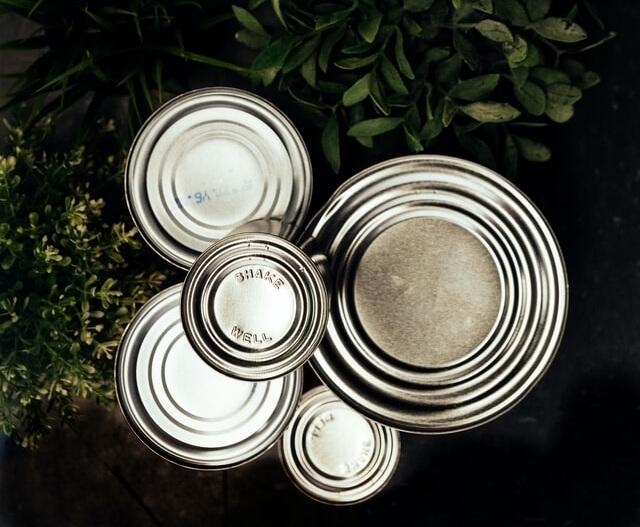
The primary issue with canning is that bacteria aren’t killed off in the process and is allowed to grow in the can; watch out for signs of spoiled canned food:
- Dents
- Swelling
- Rust
Preserving Food Through Curing or smoking
Curing can be done dry or through a brine method, and it extends the life of your meat and prevents bacteria from growing. The most simple method involves placing your meat in a container and completely covering it in curing salt for an extended period of time to draw out all the moisture.
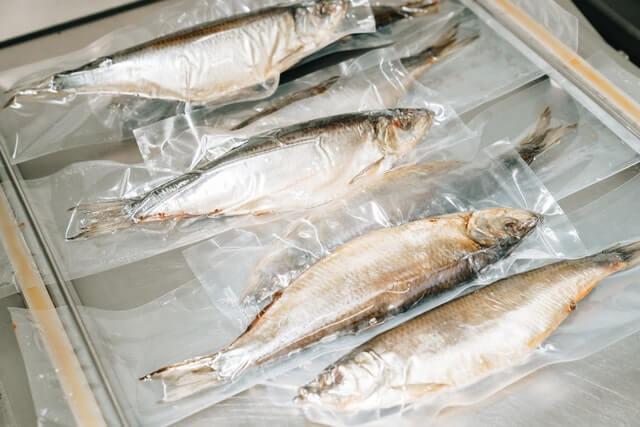
You can also store your cured meat in the fridge or freezer for even longer preservation.
- Thicker cuts of meat should be cured for longer.
- Cure meat between 36 – 40 degrees Fahrenheit; if you’re trying to cure at a lower temperature, your meat won’t cure properly.
- Ensure your curing salt contains nitrates.
Preserving Food Through Drying Or Dehydration
Food can be preserved by drying or dehydration methods; essentially, you remove all of the moisture from the food, which prevents bacteria from growing and food from spoiling as quickly.
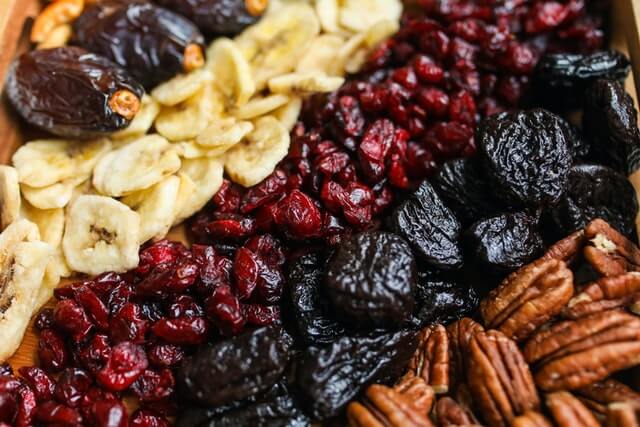
- Dedicated dehydration machines provide a simple method and ensure the safest result for meat, as well as fruits and vegetables.
- Only dry fruits or vegetables in the sun, not meat.
- Your oven can be used at the lowest temperature to dehydrate fruits and vegetables.
- Keep the heat of any device to the lowest temperature possible for the best results.
- Make sure that any food is completely dry before drying or dehydrating
- Use glass jars or heavy-duty ziplock bags to store food
- Check containers for moisture after 7 days; if moisture is found, the process failed.
Most dried or dehydrated food will stay good for 4 – 12 months.
Preserving Food Through Fermentation
Fermentation is the use of good bacteria to break down components of your food and produce acids and alcohols that help extend the life of the food. You can expect fermented food to last for at least 4 – 18 months if kept in a cool and dry place.
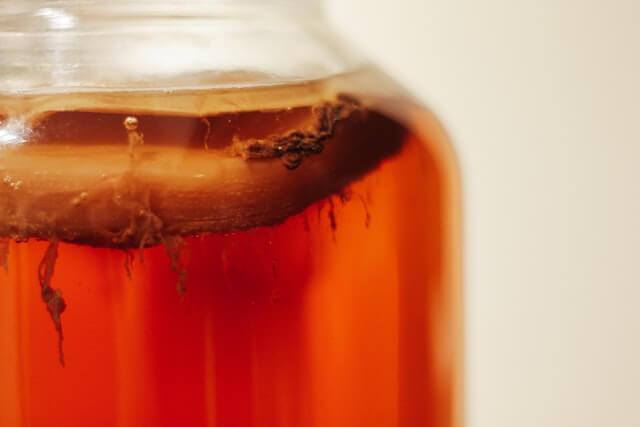
- Buy a high-quality starter culture.
- Use purified or distilled water only.
- Ensure equipment is fully sanitized before use to prevent bacteria growth
- Use food-grade plastic or glass buckets for fermentation.
- Your fermentation container should be 1-gallon for every 5 pounds of food.
Preserving Food Through Freezing
Freezing for preservation vs. just extending or storing your food has a few additional best practices; it’s also still the simplest method for most people to implement; you’re only restricted by the size or number of freezers that you have.
- Blanch fresh vegetables and dry completely before freezing. This removes any bacteria that may be present in the food.
- Cool everything to room temperature or lower before putting it into the freezer
- Use air-tight containers or zip lock bags for the freezer.
- Remove as much air from the zip lock bags as possible before sealing.
Meats are typically best for 3 – 9 months in the freezer, though
Preserving Food Through Pickling
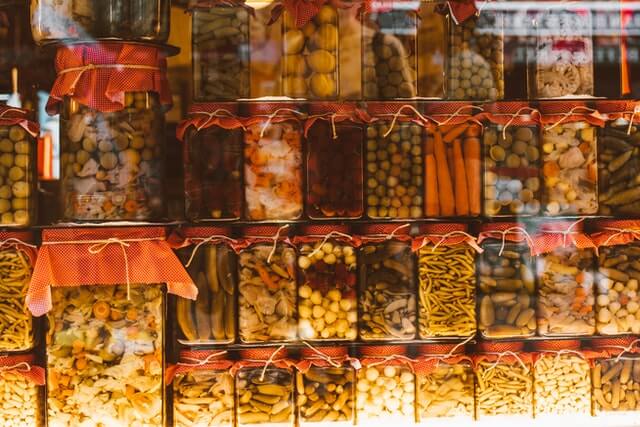
Pickling is the same as canning, but vinegar is added to the container as a further preserving method, which can change the taste of the food, which many people enjoy more than straight canned foods.
You should follow the same best practices and precautions for pickled food as you do with canned food.
- Don’t alter pickling vinegar with your own ingredients or dilute it.
- Use white vinegar with 5% acidity
- Use soft water for the best results
Which Is The Best Method For Preserving Food?
Pick the method for storing and preserving your food that you can safely and conveniently do, and test out the process to make sure it works before doing a bulk batch of preserving.
The simplest method is always going to be storing food in an airtight bag or container made for the freezer and stored in the freezer. It’s simple and offers long-lasting preservation of your food.
If you’re in a rural area or have power outages, then canning will be the best option but it requires some testing and skill to get the process right.


